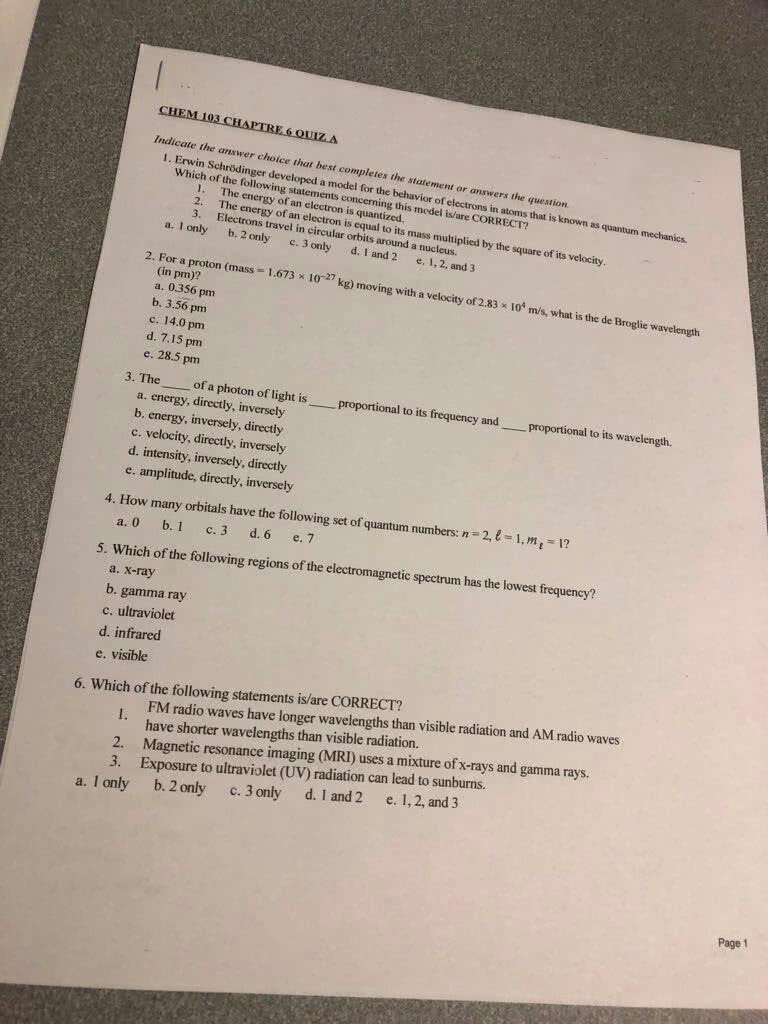Chemistry 1301A/B Chapter Notes - Chapter 1.1: Rydberg Formula, Hydrogen Spectral Series, Balmer Series
Document Summary
In terms of wavelengths: gamma rays < x rays < uv < visible < ir < microwaves < Drawing of a wave: = dista(cid:374)(cid:272)e f(cid:396)o(cid:373) peak to peak, = f(cid:396)e(cid:395)ue(cid:374)(cid:272)(cid:455) = (cid:374)u(cid:373)(cid:271)e(cid:396) of (cid:449)a(cid:448)es pe(cid:396) u(cid:374)it of ti(cid:373)e, phase (+ and -) the horizontal position of the wave, amplitude = height of the wave. Infrared light emitted by hydrogen atoms are known as paschen series. If all wavelengths had the same energy/frequency, then all colours would look the same: rydberg formula gives all the wavelengths for all the series. It treats electrons as particles: only works for hydrogen. Quantum mechanical model: the correct theory of atoms, molecules and solids requires treating electrons as waves. Two slit experiment: when a beam of light passes through a slit, light waves propagate in all directions to produce interference patterns. Schrodinger equation: the shape of a wave can be depicted by the schrodinger equation.




